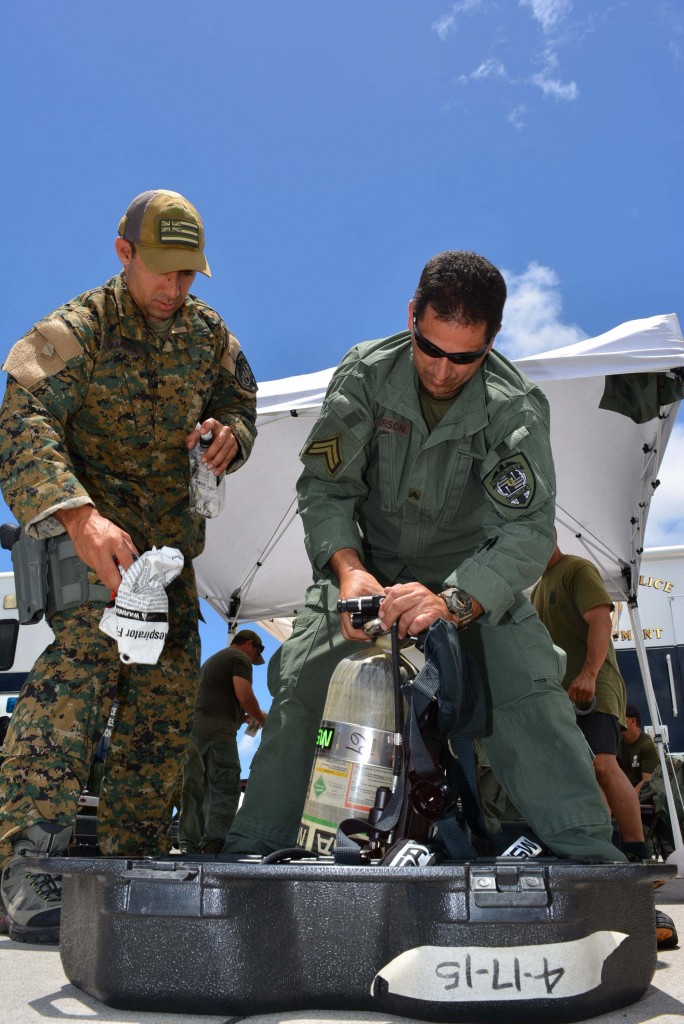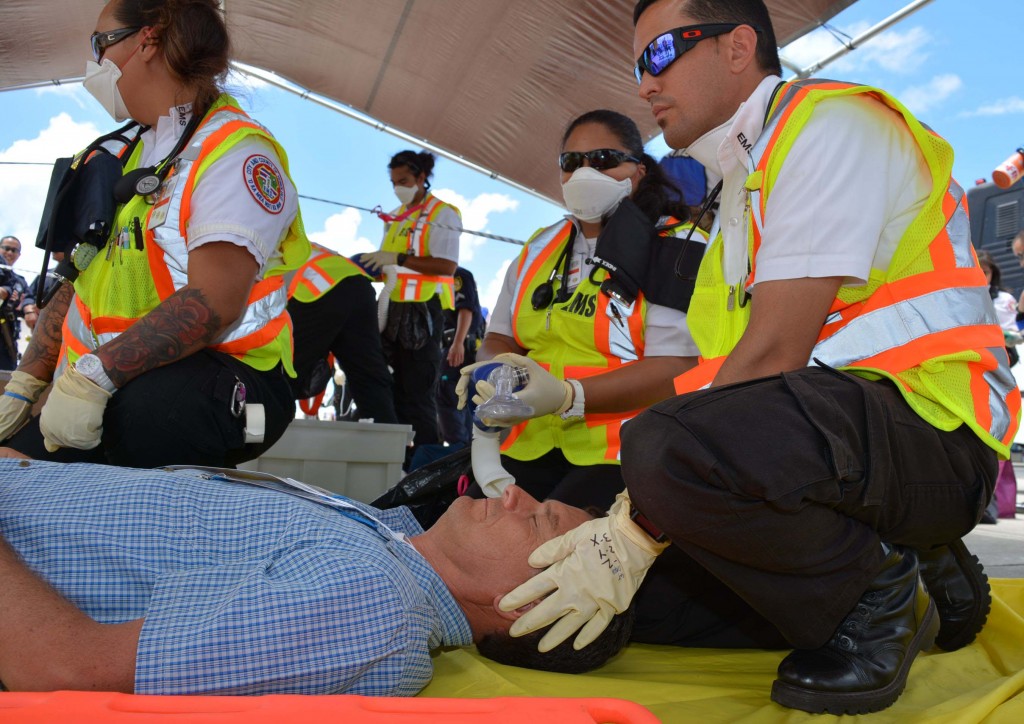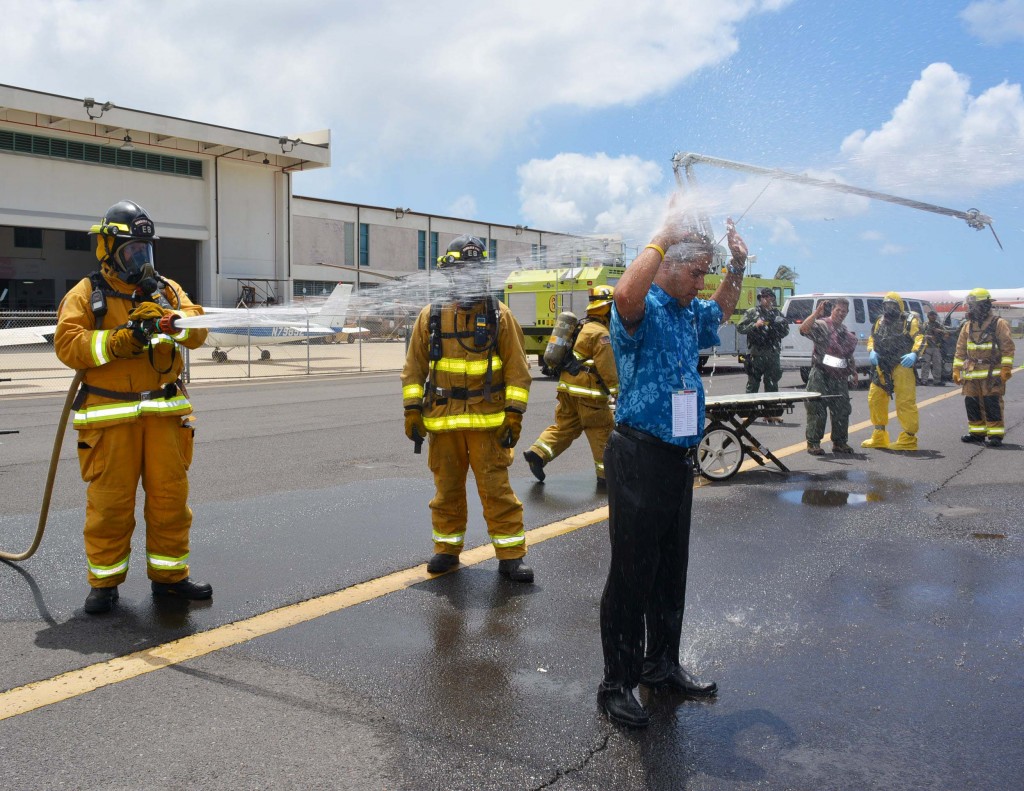Exercise Kai Malu O’Hawaii 2015 Reaps Training Benefits to Improve Hawaii’s Emergency Response
Posted on May 11, 2015 in FY2015Story and photos by: Christine Rosalin

HONOLULU – Hundreds of federal, state and county personnel participated in a joint-interagency full-scale threat exercise at the Honolulu International Airport May 7.
Exercise Kai Malu O’ Hawaii, meaning into protected waters of Hawaii, is an annual exercise sponsored by the Hawaii National Guard’s 93rd Civil Support Team (CST) designed to test first responders at the local, state and federal levels.
“The overall goal of this exercise is to foster joint-interagency cooperation with numerous agencies at different levels and tiers to work together to resolve a potential disaster involving chemical, biological, nuclear, or radiological weapons of mass destruction (CBRNE-WMD) situation that may arise,” said Lt. Col. Lance Okamura, 93rd CST commander. “This exercise provides a great opportunity to learn each other’s roles and responsibilities, and actively engage in how we can all work together as one Ohana, which means one family,” said Okamura.
Okamura said he observed significant improvements in the interoperability, teamwork and cooperation compared to last year’s sixth iteration of the exercise.
This year’s exercise scenario involved a notional in-bound aircraft with potential CBRNE-WMD threats flying into the Honolulu International Airport, which sits next to the Honolulu Harbor. The harbor is deemed one of the most critical sites on Oahu and such a threat causes multiple agencies at the city and county, state and federal levels to get involved. Several scenarios involved detecting and responding to chemical threats, attending to casualties and decontaminating personnel and equipment.
Honolulu Police Bomb Squad Sgt. Ronald Taira, Specialized Services Division, said the importance of this training event is immeasurable.
“This exercise greatly benefits Hawaii,” said Taira. “When you’re talking about a potential event this size, we would have to work hand-in-hand together and put our resources together. I believe this training benefits all involved. Every agency here would have a part in it in real life so seeing how each agency works and how we can help each other is crucial.”
Taira said he believes this is the largest full-scale exercise held annually on Oahu that allows many agencies to train together at the same time.
Agencies participating in the exercise included the Honolulu Police Department, Honolulu Fire Department, Hawaii Emergency Management Agency, Department of Public Safety Sheriff’s Division, Department of Transportation, Honolulu Airport Crash, Fire and Rescue Division, FBI, U.S. Department of Homeland Security, 647th Explosive Ordnance Disposal unit and the 93rd CST.
The 93rd CST plays a civil support role to various agencies at all levels by providing technical expertise and assistance needed to help resolve potential CBRNE WMD incidents.
The exercise was broken into three phases: senior leadership table-top exercise held May 6, full-scale exercise May 7, and concluded May 8 with an After Action Review (AAR) that provided a mechanism to update and improve best practices and products that will guide key personnel to improve Hawaii’s emergency response.




